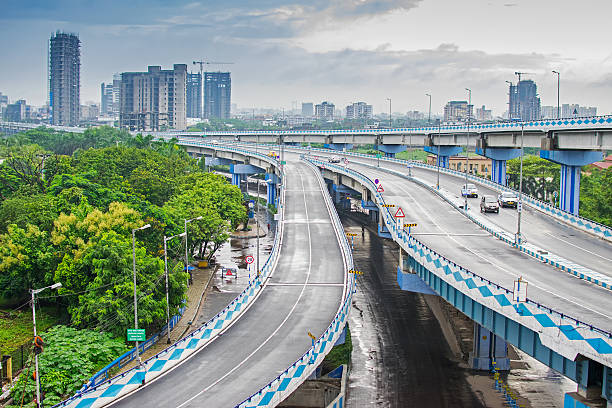Contact Us
RoadVision AI
Private Limited
Office No. 308 & 310, B Block
Ansal Chamber - 1, Bhikaji Cama Place,
Near Engineers India Limited (EIL) Bhawan, New Delhi - 110066
© 2024 | RoadVision AI | All rights reserved
The Indian Roads Congress (IRC) has been instrumental in establishing guidelines and standards for road infrastructure in India. One of the key documents in this regard is the IRC 005:1998, which outlines the general features of design for road bridges. This code serves as a comprehensive guide for engineers involved in the design and construction of road bridges, ensuring safety, stability, and functionality.

The journey of the IRC Bridge Code began in the mid-1940s, with the initial draft prepared by the Bridges Sub-Committee. Over the years, the code has undergone several revisions, with the first publication occurring in 1956. The IRC 005:1998 represents the seventh revision, reflecting the evolving needs and technological advancements in bridge engineering.
The IRC 005:1998 code applies to all types of bridges constructed for road traffic or other moving loads. It categorizes bridges into minor (up to 60 meters) and major (over 60 meters) based on their total length. Additionally, it defines various types of structures, including culverts, footbridges, high-level bridges, and submersible bridges, each serving specific purposes in road infrastructure.
The code emphasizes the importance of thorough data collection for effective bridge design. Engineers are required to gather general data, topographical features, hydraulic data, geological and seismological data, and environmental data. This comprehensive approach ensures that all factors influencing the bridge's design and construction are considered.
One of the critical aspects of bridge design is determining the design discharge, which is based on the maximum flood discharge with a return cycle of 50 years. The code provides guidelines for calculating the effective linear waterway, ensuring that the bridge can accommodate expected water flow without causing erosion or flooding.
The placement of piers and abutments is crucial for the bridge's stability. The code advises engineers to locate these supports to optimize foundation conditions while considering navigation, aesthetics, and the potential impact of floating debris.
Vertical and horizontal clearances are essential for ensuring safe passage for vehicles and pedestrians. The code specifies minimum clearances based on the type of bridge and its location, including additional considerations for high-level bridges and those in urban areas.
Safety is a paramount concern in bridge design. The code mandates the inclusion of railings, parapets, and crash barriers to protect against errant vehicles and ensure pedestrian safety. The design of these features must consider the structural integrity and aesthetic appeal of the bridge.
Proper drainage is vital for the longevity of bridge structures. The code recommends designing bridges with longitudinal gradients and cross drains to facilitate effective water runoff. Additionally, provisions for maintenance access are essential for the ongoing upkeep of the bridge.
The IRC 005:1998 code recognizes the importance of aesthetics in bridge design. Engineers are encouraged to select visual forms that harmonize with the surrounding landscape, ensuring that the bridge is not only functional but also visually appealing.
The IRC 005:1998 code serves as a vital resource for engineers involved in the design and construction of road bridges in India. By adhering to the guidelines outlined in this code, engineers can ensure that bridges are safe, efficient, and aesthetically pleasing. As infrastructure continues to evolve, the IRC remains committed to providing updated standards that reflect the latest advancements in engineering and technology.
For engineers and stakeholders in the field of civil engineering, understanding and implementing the provisions of the IRC 005:1998 is essential for the successful execution of road bridge projects, ultimately contributing to the development of a robust and reliable transportation network in India.
RoadVision AI is revolutionizing the way we build and maintain infrastructure by leveraging the power of AI in roads to enhance road safety and optimize road management. By utilizing cutting-edge roads AI technology, the platform enables the early detection of potholes, cracks, and other road surface issues, ensuring timely maintenance and improved road conditions. With a mission to create smarter, safer, and more sustainable roads, RoadVision AI ensures full compliance with IRC Codes, empowering engineers and stakeholders to make data-driven decisions that reduce costs, minimize risks, and improve the overall transportation experience.